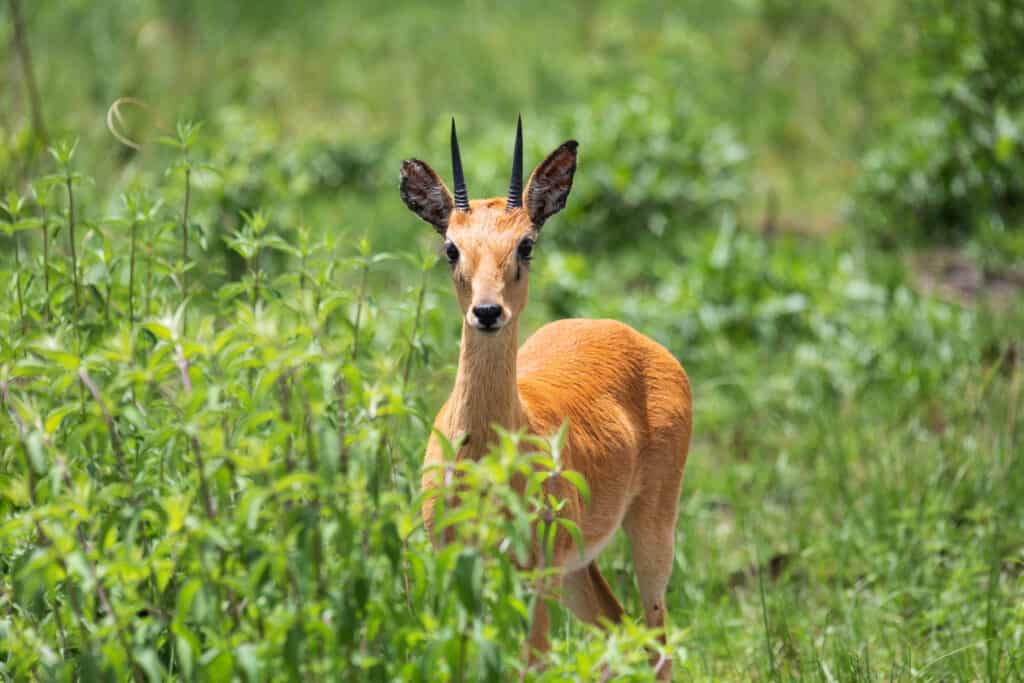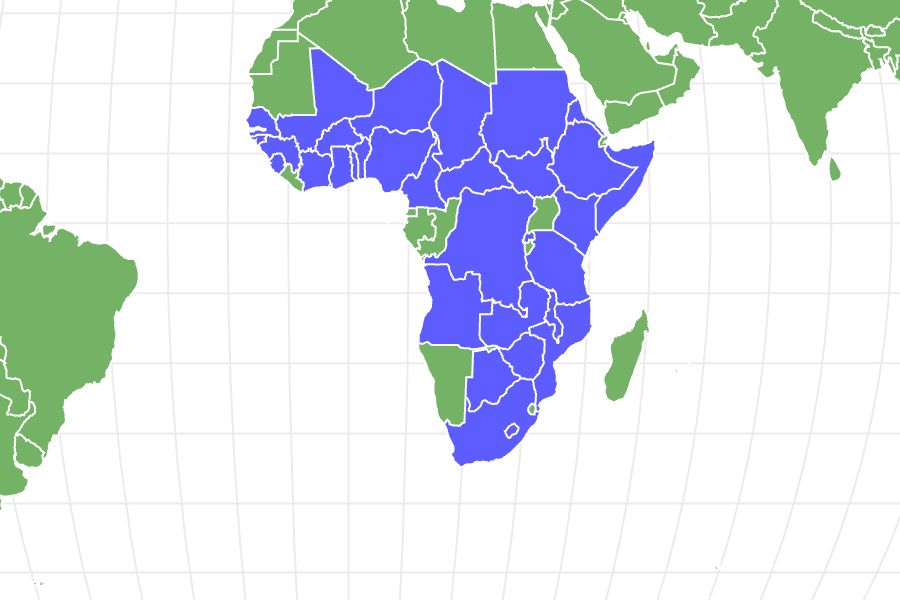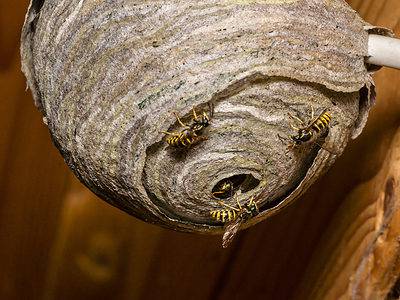Oribi
Ourebia ourebi
Males oribis spend most of their time patrolling the borders of their territories; they can do this about 16 times an hour! However, 27% of their day is spent grazing.
Advertisement
Oribi Scientific Classification
- Kingdom
- Animalia
- Phylum
- Chordata
- Class
- Mammalia
- Order
- Artiodactyla
- Family
- Bovidae
- Genus
- Ourebia
- Scientific Name
- Ourebia ourebi
Read our Complete Guide to Classification of Animals.
Oribi Conservation Status
Oribi Facts
- Name Of Young
- Calves
- Group Behavior
- Group
- Solitary/Pairs
- Fun Fact
- Males oribis spend most of their time patrolling the borders of their territories; they can do this about 16 times an hour! However, 27% of their day is spent grazing.
- Estimated Population Size
- 750,000
- Biggest Threat
- Habitat loss
- Gestation Period
- 6 to 7 months
- Age Of Independence
- 7 to 14 months
- Litter Size
- 1
- Habitat
- Open woodlands, grasslands, and floodplains
- Predators
- Hyenas, leopards, lions, caracals, crocodiles, snakes, and wild dogs
- Diet
- Herbivore
- Lifestyle
- Diurnal
- Favorite Food
- Grass
- Common Name
- Oribi
- Location
- Africa
Oribi Physical Characteristics
- Color
- Yellow
- Red
- White
- Orange
- Skin Type
- Fur
- Lifespan
- 8 to 12 years
- Weight
- 30 to 31 pounds
- Height
- 20 to 26 inches
- Age of Sexual Maturity
- 7 to 14 months
- Age of Weaning
- 3 months
- Aggression
- Low
Summary
Oribis are unique little antelope because they can adapt well to most environments, which is why they can be found scattered across the African continent. While there are a few solitary males, they generally live in breeding pairs or groups of three, consisting of one male and two females.
Female oribis sexually mature at the young age of seven months, but the males take a bit longer, maturing between 10 and 14 months.
This antelope communicates by vocalizations and scent; males have six glands, each with an individual scent that the male oribi uses to mark its territory and attract a female.
Another unique trait is their eating habits. Unlike most antelope, they predominantly graze and tend to steer clear of areas littered with bushes, trees, and shrubs.
Oribi Facts
- The oribi survives by hiding in the bushes and then jumping, while using vertical leaps to avoid being caught.
- They let out shrill whistles when under threat.
- Oribis can reach speeds of 25 to 30 mph, making it easier to escape predators.
- Their natural predators include crocodiles, leopards, jackals, caracals, hyenas, lions, wild dogs, eagles, and pythons.
Oribi Scientific Name
The oribi’s scientific name is Ourebia ourebi, and they are members of the order Artiodactyla, which consists of even-toed ungulates. This order is a diverse group of mammals found all around the world, with the exceptions of Australia and Antarctica.
Artiodactyla is made up of 220 species, which include several types of gazelles, deer, bison, antelope, goats, cows, pigs, sheep, pigs, giraffes, camels, and hippopotamuses.
Most species in this order eat plant foods and have a few important adaptations to accommodate this diet. For example, their teeth have complex ridges that can grind coarse plant material. Their digestive system, which ferments these high-fiber foods, allows them to absorb as much nutrition as possible from leaves and grasses.
Oribis belong to the family Bovidae that consists of cloven-hoofed, ruminant mammals, including:
Presently, there are 143 species in this family, but there are also 300 known extinct species. This animal dates back to the Miocene epoch, almost 20 million years ago.
Oribi Appearance
The oribi is a tiny antelope that measures 20 to 26 inches tall. Both females and males weigh around 30 pounds. Because of their small stature, these fascinating little animals fall into the dwarf antelope family.
Oribis have long, slender necks, slightly curved pointed horns, narrow ears, and stunning reddish-ginger fur, with white bellies and a black tail. In addition, they have odd-shaped black dots on either side of their heads.

Oribis have long, slender necks, slightly curved pointed horns, narrow ears, and stunning reddish-ginger fur.
©Artush/Shutterstock.com
Oribi Behavior
These antelope might be small, but they are fiercely territorial. They mate for life, but some live in groups where the male has two female mates. Pairs typically live in territories that are approximately 250 acres.
When marking their territory, males smell the females, which stimulates them to deposit feces on the ground. Then, the male uses his scent glands to mark the feces before violently stomping on it. Lastly, the male urinates and defecates on the female’s feces.
These antelope have six different glands that they use to release scents to mark their territories and attract mates. Some of these scents are also used to communicate with other oribis.
Other means of communication include visual displays and vocalizations; however, scent is their preferred choice. Although they mate for life, they only make physical contact when mating, where they will greet each other by touching noses.
Males oribis spend most of their time patrolling the borders of their territories; they do this about 16 times an hour! However, 27% of their day is spent grazing.
Oribi Habitat
Oribi can be found scattered throughout most countries in Africa, including South Africa, South Sudan, Benin, Togo, Malawi, and Zimbabwe.
These bucks are unique in the fact that they are one of the only small antelope to predominantly graze, and they try to avoid areas abundant in bushes, shrubs, and trees. Instead, they tend to gravitate towards open woodlands, grasslands, and floodplains, where they thrive.
Because they prefer eating short grass, they are often spotted near large herbivores like hippos, zebras, and buffalos. These large herbivores act like lawnmowers and keep the grass at the perfect length for oribis.
Oribi Diet
The oribi is a herbivore that thrives on grazing land and grasses, but if it doesn’t have access to its preferred food, it will feed on foliage, nuts, legumes, fruits, and leaves.
Oribi Predators and Threats
Animals that prey on the oribi include:
- Hyenas
- Caracals
- Jackals
- African wild dogs
- Crocodiles
- Lions
- Leopards
- Snakes
Sadly, these tiny antelopes also fall prey to sport hunting in South Africa, even though it’s illegal.
While the oribi is listed as Least Concern on IUCN’s Redlist, their numbers are declining due to the following threats:
- Mismanagement – the oribi inhabits many areas that overlap agricultural land, and due to impenetrable fences, poor veld management, irresponsible burning practices, and domestic dogs, their numbers are decreasing.
- Habitat loss – they are losing their homes to commercial forestry, expanding settlements, commercial farming, erosion, and mining.
- Illegal hunting – poachers set snare traps and release hunting dogs into their habitats.
Oribi Reproduction, Babies, and Lifespan
Oribis are mammals, so they give birth to living young. Their mating season occurs throughout the year, primarily during the wetter seasons. Females will carry their young for six to seven months and usually give birth to one calf, but they can sometimes have twins.
Females sexually mature at seven months old, and males take a little longer, only reaching maturity at 10 to 14 months.
Babies
Juvenile oribi males who haven’t found a mate are typically solitary, but it’s not uncommon to see juveniles stay in family groups with their parents. A few weeks before the female is about to give birth, she will avoid social interactions, and once her calves are born, she will hide them until they are weaned at around three months old. The calves will stay with their parents until they become sexually mature.
Lifespan
The oribis’ average lifespan is around eight to 12 years in the wild. However, they can live to the old age of 16 in captivity.
Oribi Population
There are an estimated 750,000 oribis in the wild, but their population is declining each year.
Oribi In Captivity
Conservationists have set up a captive breeding program in South Africa, where they breed oribis and try to release them back into the wild. Once the oribi is old enough, they release it onto neighboring agricultural or game farms. This has been an ongoing project for 10 years.
However, it did not go as planned. Unfortunately, out of the 10 oribis released, only three survived. The remaining seven were either killed by predators or humans.
While there are not many of these tiny antelope in zoos, people can spot them at numerous national parks and game farms across the African continent.
Animals Similar to the Oribi
There are several African antelope species that are similar to the oribi; they include:
Duiker
The duiker is often referred to as the common duiker because they have the widest distribution of any African antelope species. Other names for these adorable animals are bush duiker or grey duiker. Duiker is an Afrikaans word that means “to dive.” This name references their ability to quickly duck into the bushes when threatened. They are approximately 35 inches tall and can reach a maximum weight of 175 pounds. They have very distinctive long orange or whitish-yellow fur that stands up on their backs.
Steenbok
Steenboks are one of the most adorable antelopes on the planet. They occur in southern Africa, particularly Botswana and South Africa. Due to their tiny size, they form part of the dwarf antelope group. But don’t let their small bodies fool you; these antelopes are fast, making it hard for predators to catch them. Females are bigger than males and can weigh around 25 pounds, while males weigh approximately 24 pounds. In addition, males have short, straight horns that measure around 3.5 to 7.4 inches.
Klipspringer
The Klipspringer, which means rock jumper in Afrikaans, is also a member of the dwarf antelope group. They occur primarily in South Africa but also inhabit eastern Africa, in countries like Ethiopia. Klipspringers only grow to around 22 inches tall, which is tiny compared to the larger antelope species found in Africa. They have thick, speckled coats with olive shading, which helps them blend into rock outcrops.
Related Animals
View all 66 animals that start with OOribi FAQs (Frequently Asked Questions)
What is an oribi?
An oribi is a small African antelope.
Are oribi endangered?
There are an estimated 750,000 oribis in the wild, but even though that number sounds large, their population is declining each year. However, they are listed as Least Concern on IUCN’s redlist.
Is the oribi unique?
Oribi are unique little antelope because they can adapt well to most environments, which is why they are found scattered across the African continent.
Thank you for reading! Have some feedback for us? Contact the AZ Animals editorial team.
Sources
- South African National Biodiversity Institue, Available here: https://www.sanbi.org/animal-of-the-week/oribi/
- Wikipedia, Available here: https://en.wikipedia.org/wiki/Oribi#:~:text=Only%20males%20possess%20horns%3B%20the,and%20ringed%20at%20the%20base.&text=Typically%20diurnal%2C%20the%20oribi%20is,62%E2%80%93247%20acres)%20large.
- African Sky, Available here: https://www.africansky.com/african-travel/south-africa/destinations/national-parks/kruger-park/mammals/oribi
- IUCN Redlist, Available here: https://www.iucnredlist.org/species/15730/50192202

















